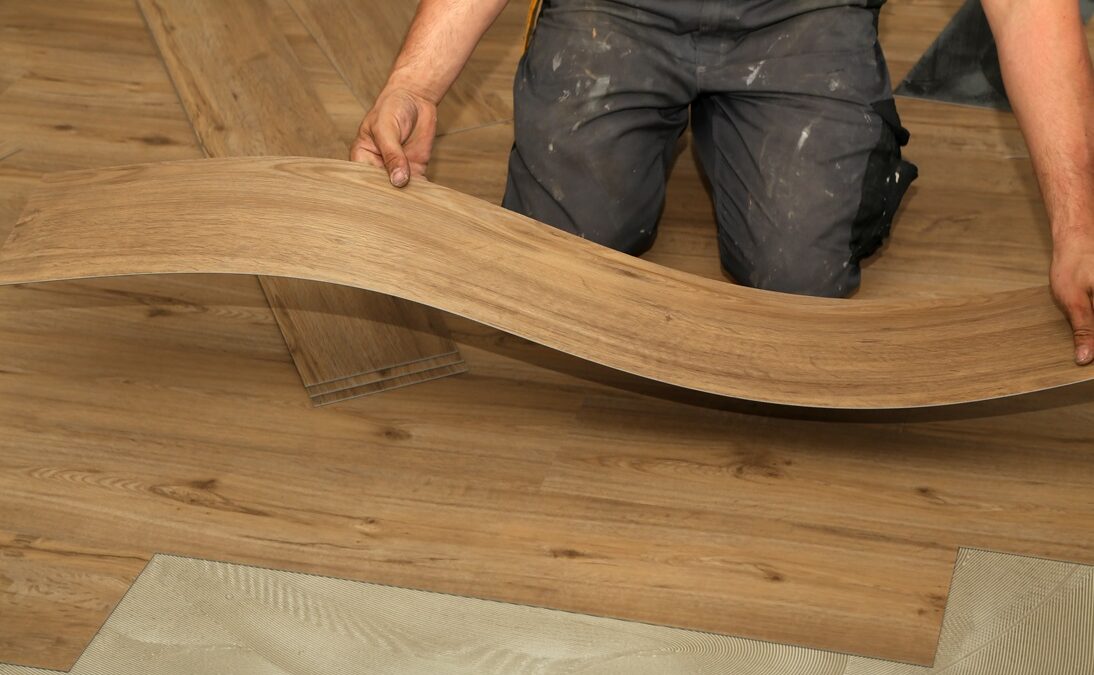When it comes to home improvement, finding a convenient and cost-effective solution is key. Peel and stick vinyl flooring has emerged as a popular choice for those looking to enhance their living spaces without breaking the bank. In this blog, we’ll dive into the world of peel and stick flooring, exploring its materials, benefits, installation process, and the burning question on everyone’s mind: How long does peel and stick vinyl last?
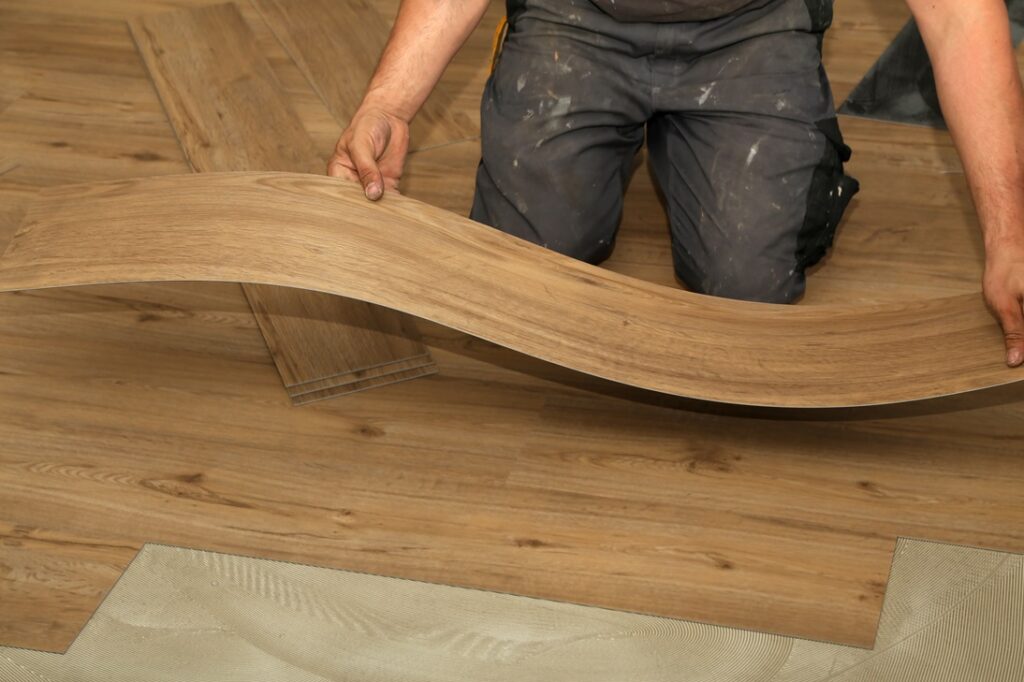
Peel and Stick Flooring Materials
Peel and stick flooring comes in various materials, offering homeowners a range of options to suit their preferences and needs. The most common materials include vinyl, laminate, and hardwood. Vinyl, in particular, stands out for its affordability, durability, and versatility. Laminate provides a realistic wood or stone look, while hardwood peel and stick tiles offer a touch of natural elegance. Understanding the materials allows you to make an informed decision based on your aesthetic preferences and budget.
Benefits of Peel and Stick Vinyl Flooring
There are several benefits of peel and stick vinyl flooring, including that it is affordable, easy to install, durable, water resistant, and there is no flooring underlayment needed. Let’s explore each of these benefits a little deeper.Laminate flooring is a synthetic product that mimics the look of hardwood or stone at a more affordable price. It consists of multiple layers, including a core of high-density fiberboard, a photographic layer, and a protective top layer. Laminate is known for its ease of installation, but it may not be as durable as natural wood or stone.
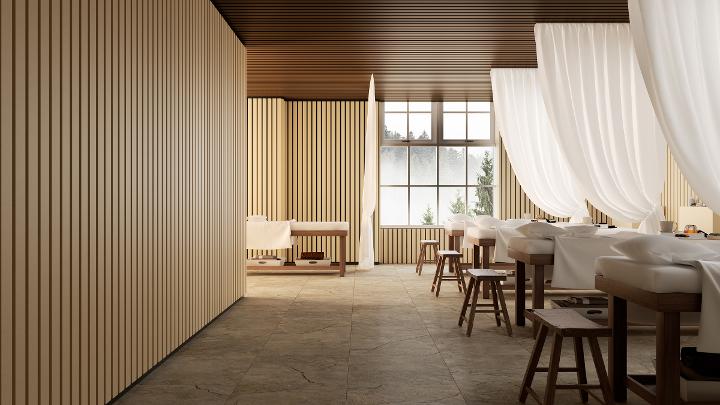
Affordable cost
One of the standout advantages of peel and stick vinyl flooring is its cost-effectiveness. With prices ranging from $1 to $5 per square foot, it’s a budget-friendly option for transforming your living space. A 200-square foot room can be upgraded for as little as $200, making it an attractive choice for those on a tighter budget but want to change their flooring.
Easy installation
The installation process of peel and stick flooring is straightforward, making it an ideal choice for DIY enthusiasts. The peel-and-stick nature eliminates the need for adhesives, simplifying the process even further. This ease of installation not only saves you money on professional labor, but also allows you to undertake the project at your own pace.
Durability and water resistance ideal for temporary solution
Peel and stick vinyl flooring is designed to withstand the rigors of everyday life. Its durability makes it an excellent choice for high-traffic areas, ensuring that it maintains its appearance over time. Additionally, the water-resistant nature of vinyl makes it suitable for spaces prone to moisture, such as bathrooms and kitchens. While it may not be a permanent solution, peel and stick flooring provides a durable and water-resistant option for those seeking a temporary upgrade.
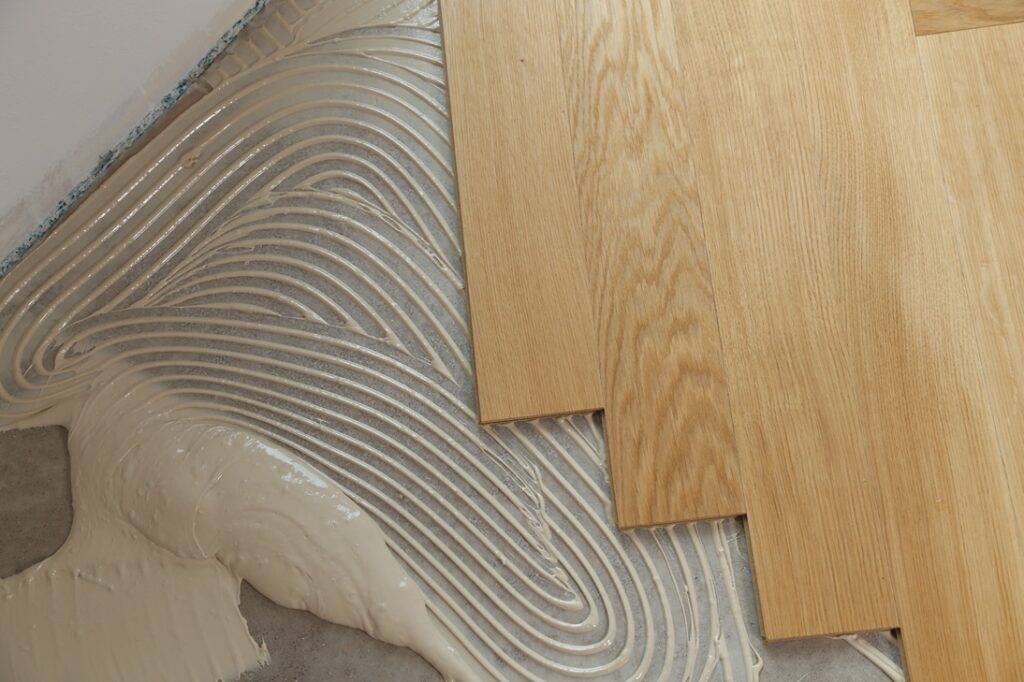
Variety of styles and materials
Whether you prefer a classic wood look, the elegance of stone, or a modern tile aesthetic, peel and stick vinyl flooring has you covered. The variety of styles and materials available allows you to personalize your space according to your taste. This flexibility makes peel and stick flooring a versatile choice for any room in your home.
Flooring underlayment not needed
Unlike traditional flooring options, peel and stick vinyl doesn’t require an additional underlayment. This not only simplifies the installation process but also saves you money on materials. The peel and stick design adhere directly to the existing floor, creating a seamless and cost-effective solution.
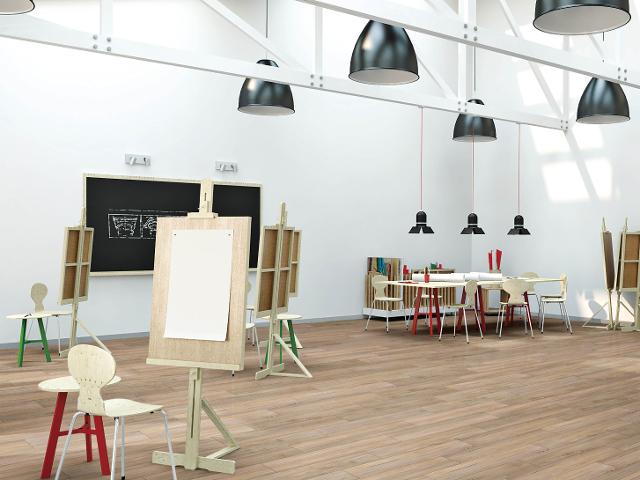
How to Install Vinyl Peel and Stick Flooring
Now that you’re sold on the benefits of peel and stick vinyl flooring, let’s go step-by-step on the process of installing this versatile flooring option.
1. Prepare the existing floor: The key to a successful peel and stick installation lies in proper preparation. Ensure the existing floor is clean, smooth, and free from any debris. Repair any cracks or imperfections to create a flawless surface.
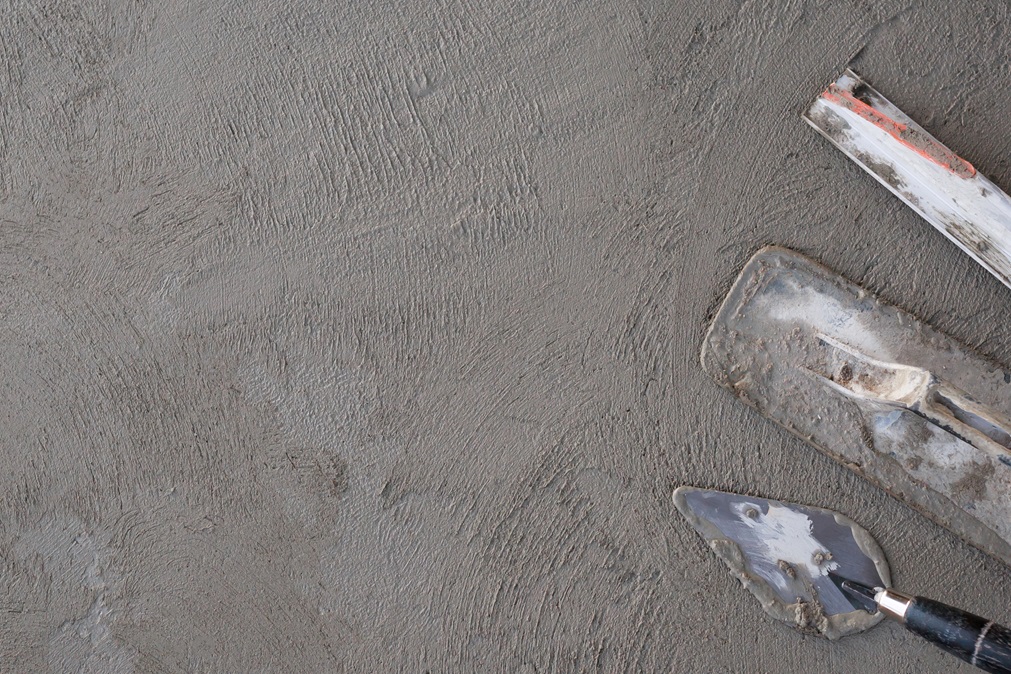
2. Measure and cut: Measure the dimensions of your room to determine how many peel and stick tiles you’ll need. Once you have the measurements, use a straight-edge and a utility knife to cut the tiles to fit the space, ensuring a snug and professional-looking installation.
3. Start from the center: Begin laying the peel and stick tiles from the center of the room, working your way outward. This helps create a balanced and symmetrical look. Use a chalk line to establish guidelines for accuracy.
4. Peel and stick: Peel the backing off the first tile and carefully press it onto the prepared floor. Continue this process, aligning the tiles with the guidelines you’ve established. Make any necessary cuts to fit the tiles around corners or obstructions.
5. Roll for adhesion: Once all the tiles are in place, use a floor roller to ensure proper adhesion. This step is crucial for the longevity and stability of the flooring.
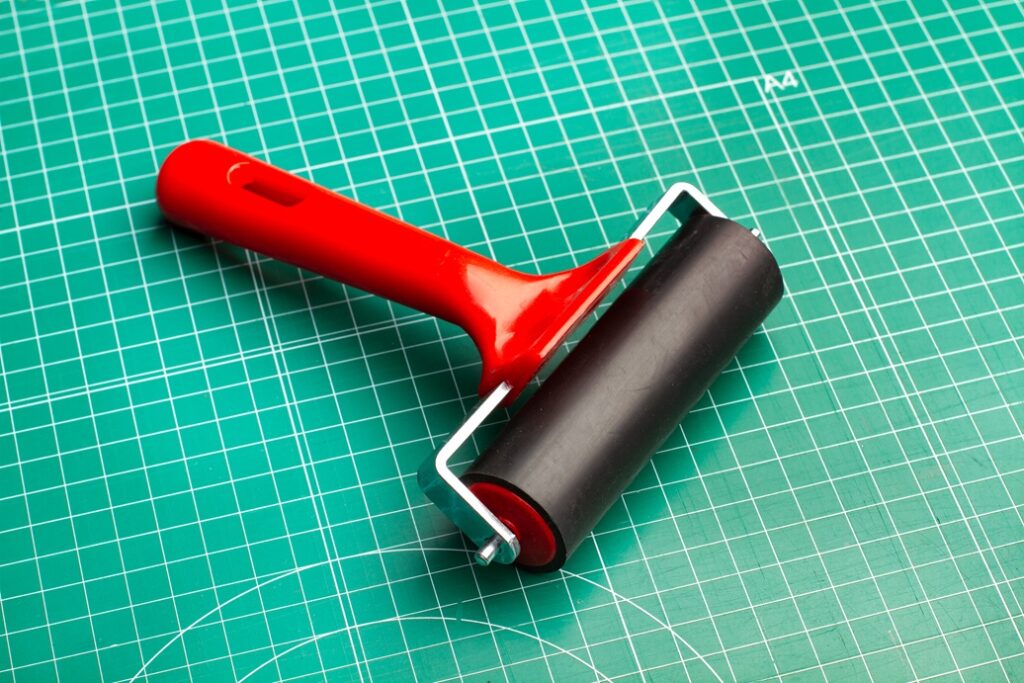
5. Roll for adhesion: Once all the tiles are in place, use a floor roller to ensure proper adhesion. This step is crucial for the longevity and stability of the flooring.
How Long Does Peel and Stick Flooring Last?
The lifespan of peel and stick vinyl flooring varies, ranging from 5 to 25 years. Several factors influence the longevity of the flooring, including installation quality, foot traffic, and exposure to water. Here’s how each of those factors can affect your peel and stick vinyl flooring:
1. Installation quality: The durability and lifespan of peel and stick flooring depend heavily on the quality of the installation. Following proper installation techniques, such as preparing the existing floor thoroughly and ensuring each tile is securely adhered, contributes to the longevity of the flooring. A well-installed peel and stick floor can withstand the test of time.
2. Foot traffic: High-traffic areas, such as entryways and living rooms, may experience more wear and tear over time. While peel and stick flooring is designed to be durable, excessive foot traffic can contribute to wear, potentially shortening the lifespan. Consider using area rugs or runners in high-traffic zones to minimize the impact.
3. Exposure to water: While peel and stick vinyl flooring is water-resistant, prolonged exposure to moisture can affect its adhesive properties. In areas prone to spills or high humidity, it’s essential to clean up spills promptly and maintain a controlled indoor environment. Proper care and maintenance will help preserve the integrity of the flooring over the years.
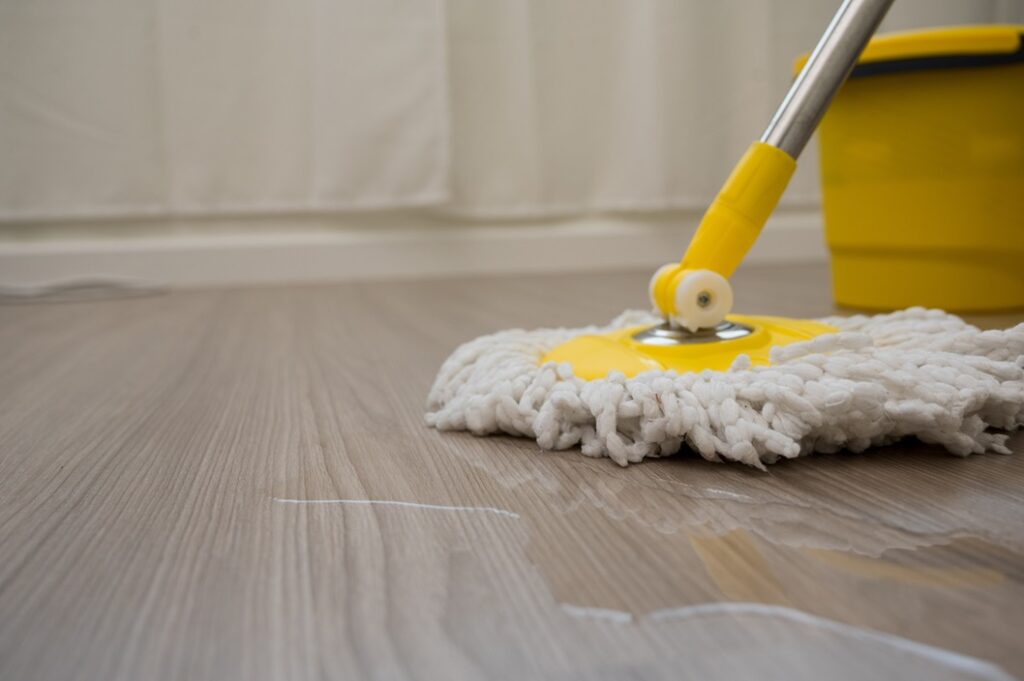
Peel and stick vinyl flooring is a versatile and cost-effective option for home improvement projects. Its affordability, ease of installation, and variety of styles make it a popular choice for any DIY’er or budget-conscious homeowner. By following proper installation techniques and considering factors such as foot traffic and water exposure, you can enjoy the benefits of peel and stick flooring for years to come. Upgrade your space with confidence, knowing that peel and stick vinyl flooring offers a stylish and durable solution for your home.
Contact us
If you have questions about the best flooring options for your home, contact the experts at LX Hausys today. Or, visit our website to view our wide range of products and gain inspiration for what’s possible.

